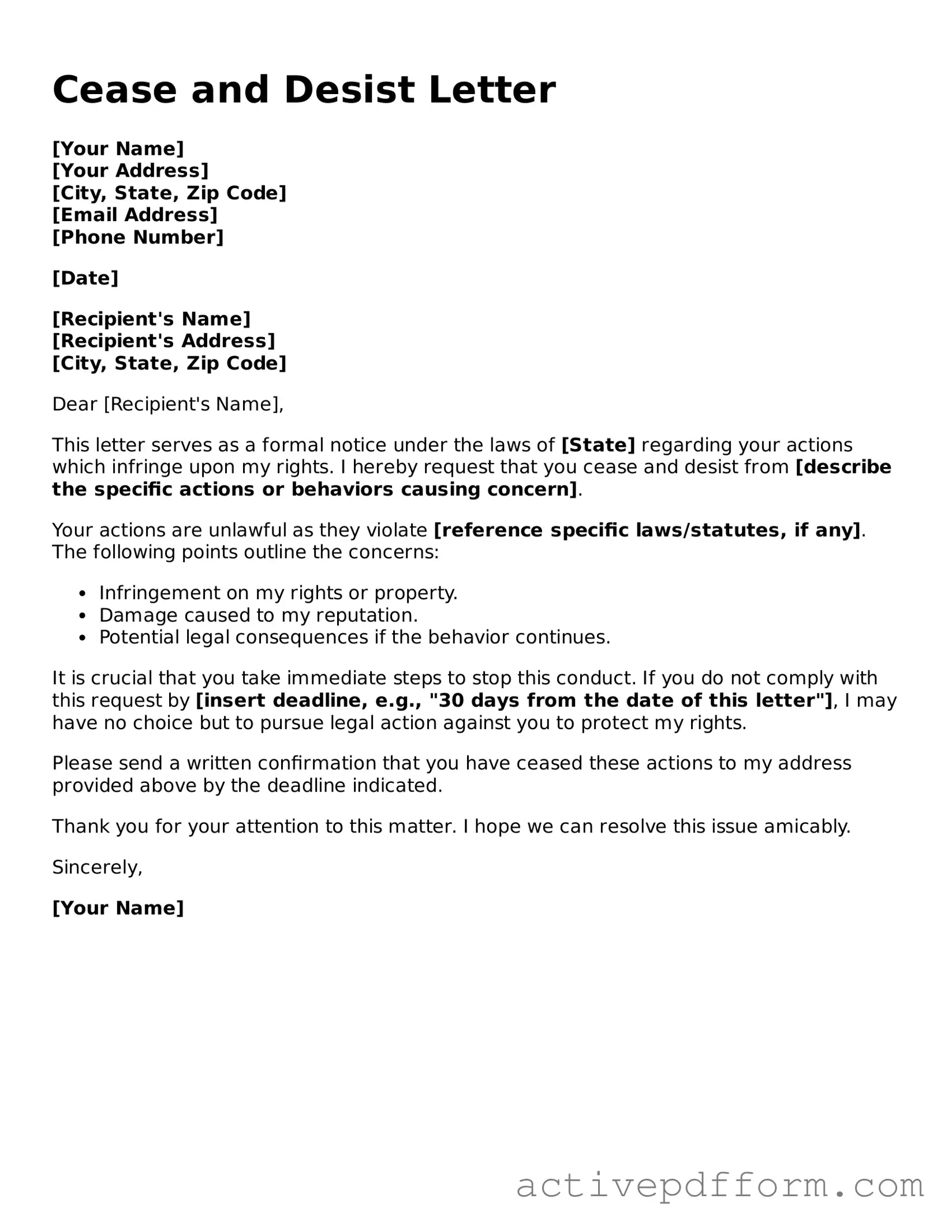What is a Cease and Desist Letter?
A Cease and Desist Letter is a formal document sent to an individual or organization to stop allegedly illegal or infringing activities. It serves as a warning that legal action may follow if the recipient does not comply. This letter is often used in cases of copyright infringement, trademark disputes, or harassment, among other issues.
Who can send a Cease and Desist Letter?
Any individual or organization that believes their rights are being violated can send a Cease and Desist Letter. This includes businesses protecting their trademarks, authors safeguarding their copyrights, or individuals addressing harassment. It’s important to ensure that you have a legitimate claim before sending such a letter.
What should be included in a Cease and Desist Letter?
A well-crafted Cease and Desist Letter should include several key elements. First, clearly identify the sender and recipient. Next, outline the specific actions that are causing concern. Provide evidence or examples of the alleged infringement, and state the legal grounds for your claim. Finally, include a deadline for compliance and specify the consequences of not complying.
Is a Cease and Desist Letter legally binding?
No, a Cease and Desist Letter is not legally binding on its own. It is essentially a request or demand for the recipient to stop certain actions. However, it can serve as an important step in documenting your concerns and can be used in court if the situation escalates. Recipients are often motivated to comply to avoid potential legal action.
What happens if the recipient ignores the letter?
If the recipient ignores the Cease and Desist Letter, the sender may choose to take further legal action. This could involve filing a lawsuit or seeking a court order to enforce their rights. Ignoring the letter can be seen as an escalation of the dispute, and it may lead to more serious consequences.
Can I send a Cease and Desist Letter without a lawyer?
Yes, you can send a Cease and Desist Letter without a lawyer. However, it is often advisable to consult with legal counsel to ensure that your letter is properly drafted and that your claims are valid. A lawyer can help you avoid potential pitfalls and strengthen your position.
How much does it cost to send a Cease and Desist Letter?
The cost of sending a Cease and Desist Letter can vary widely. If you draft the letter yourself, the cost may be minimal, primarily involving any postage or delivery fees. If you hire an attorney to draft the letter, costs can range from a few hundred to several thousand dollars, depending on the complexity of the case.
What should I do if I receive a Cease and Desist Letter?
If you receive a Cease and Desist Letter, take it seriously. Review the claims made in the letter and consider seeking legal advice. Responding appropriately is crucial, whether that means complying with the demands, negotiating a resolution, or disputing the claims. Ignoring the letter can lead to more significant legal troubles down the line.
